Ask Dan – Decompression sickness
Scuba Diving
|September/October 2020
How can I reduce my risk of decompression sickness?
-

Decompression sickness, also known as “the bends,” results from inadequate decompression after diving to depth. During a dive, the body absorbs nitrogen from the breathing gas in proportion to the surrounding pressure. While the diver remains at depth, this gas presents no problem. When the pressure is reduced as the diver ascends, however, the nitrogen may come out of solution and form bubbles in the tissues and blood.
In some cases, the symptoms are mild and may be limited to tingling, numbness, pain, or discomfort in joints or muscles. In other cases, serious symptoms, such as vertigo, paralysis, difficulty breathing or inability to urinate, may result.
DCS can result from diving too deep or staying down too long, but it also occurs in divers who dived within the limits of their computer or dive table. It’s important to remember that the most significant risk factor for DCS is your exposure profile— the time, depth and ascent rate of your dives—but there are several other risk factors that divers should also consider.
THERMAL STRESS
Diese Geschichte stammt aus der September/October 2020-Ausgabe von Scuba Diving.
Abonnieren Sie Magzter GOLD, um auf Tausende kuratierter Premium-Geschichten und über 9.000 Zeitschriften und Zeitungen zuzugreifen.
Sie sind bereits Abonnent? Anmelden
WEITERE GESCHICHTEN VON Scuba Diving

Scuba Diving
Readers Choice: Best Destinations For Photography
Species diversity, ideal in-water conditions and weird wonders earn these destinations top honors
8 mins
September/October 2020
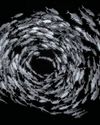
Scuba Diving
In It To Win It
Competition can help you improve your shots
4 mins
September/October 2020

Scuba Diving
Freediver
Breathing air from a tank isn’t the only way to explore beneath the waves.
1 mins
September/October 2020
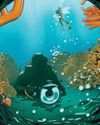
Scuba Diving
Divided Focus
Underwater, it’s vital to remember what’s really important
6 mins
September/October 2020
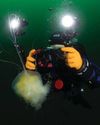
Scuba Diving
A Studio In Your Hand
Video can bring non-divers into the underwater action
4 mins
September/October 2020

Scuba Diving
Underwater photography – Do No Harm
Tips for being an ethical underwater photographer
5 mins
September/October 2020
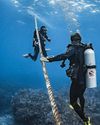
Scuba Diving
Ask Dan – Decompression sickness
How can I reduce my risk of decompression sickness?
3 mins
September/October 2020
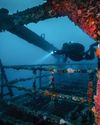
Scuba Diving
SOUTH FLORIDA
A smorgasbord of wrecks and reefs ensures you’ l l never run out of photo ops in these warm waters
3 mins
September/October 2020

Scuba Diving
Sea Hero: JOHN WELLER
How one photographer’s mission to save the Ross Sea is bringing the planet together
4 mins
September/October 2020

Scuba Diving
16 TH ANNUAL PHOTO COMPETITION: OUR SPONSORS
What’s a contest without prizes? These generous donors—whose ranks include avid shooters like you—help make photographers’ dreams come true.
3 mins
September/October 2020
Translate
Change font size

